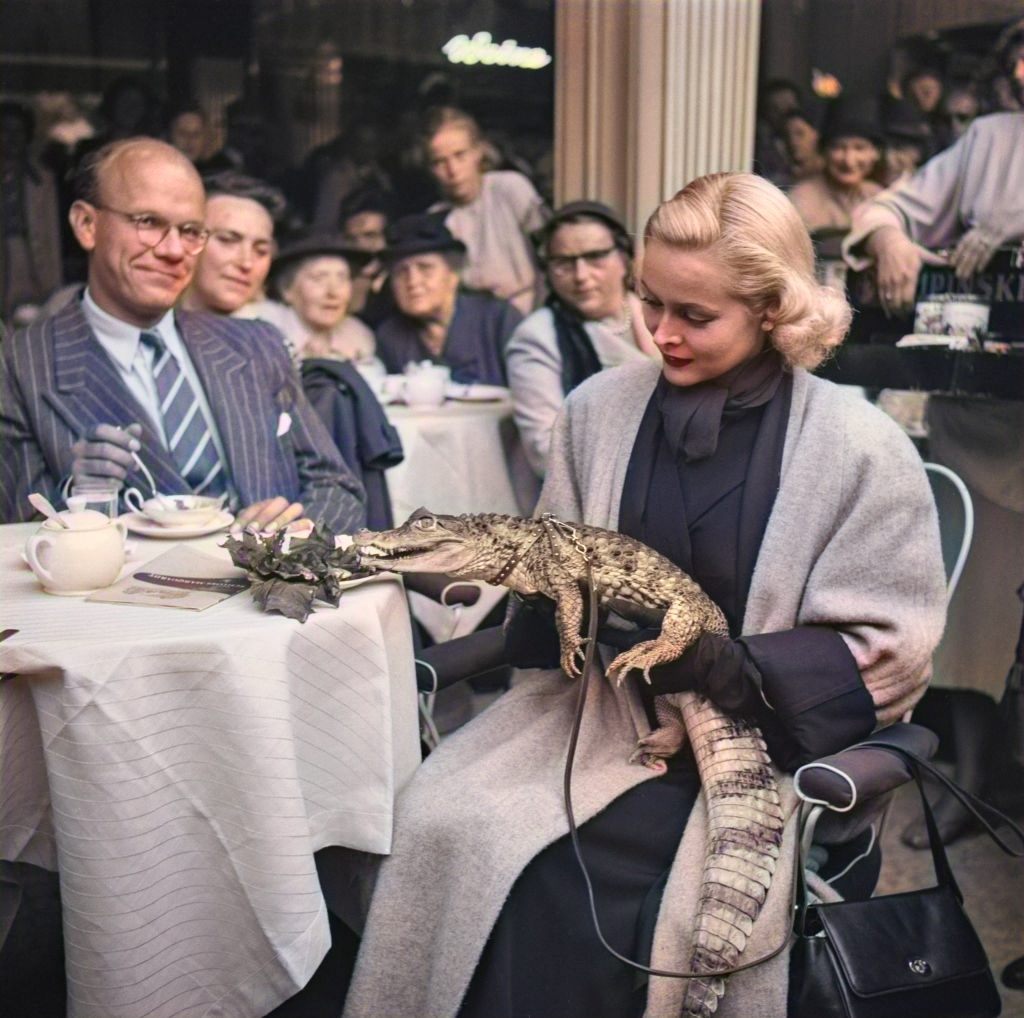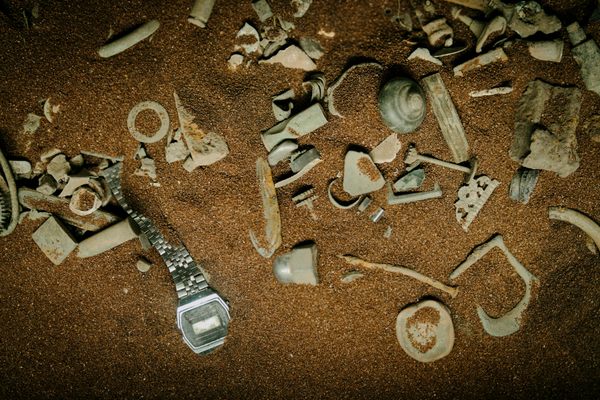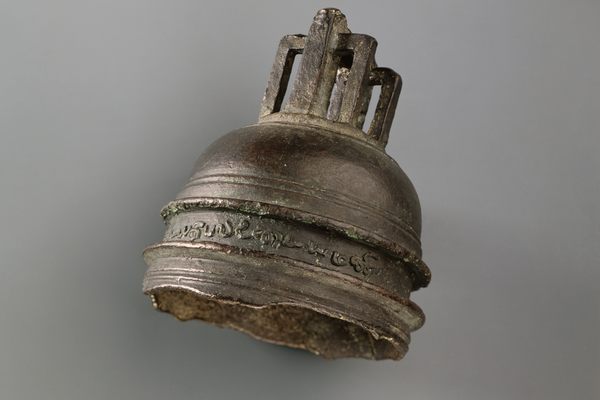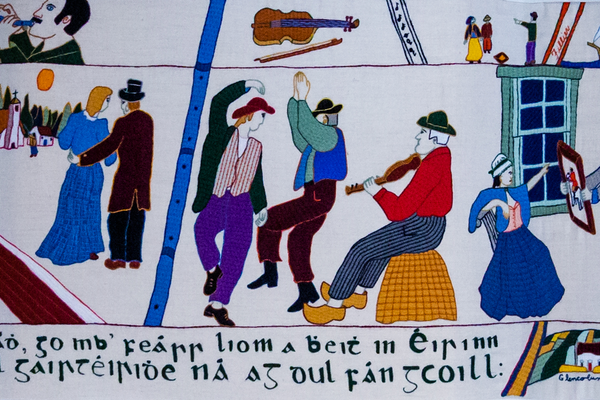How Alligators and Humans Became Friends—Kind Of
A new museum delves into our cute and terrifying relationship with gators.
Inside New Orleans’s Great American Alligator Museum, visitors’ emotions can run the gamut—from spine-chilling apprehension to warm-and-fuzzy affection.
“Many people come into the museum and marvel at Fideaux, our 14-foot taxidermy alligator who greets visitors with a wide toothy grin as they enter the main gallery, saying, ‘That’s a dinosaur!’” says Liz McDade, co-owner of the museum. “And then as they take a few more steps inside, we hear people talking about ‘Killer’—our baby alligator [part of Louisiana’s conservation initiative]—and they coo, ‘He’s so cute!’”
McDade, a geologist, and her husband, biologist, engineer, and mineral collector Robert McDade, opened the New Orleans Garden District museum in 2022. Through the museum’s eclectic curation of folk art, fossils, deformed alligator heads, alligator-themed Mardi Gras beads, TV sitcom memorabilia, and the spiky skins of poached alligators, a story emerges of the long, fascinating story of humans and gators.
“Humans have a very complicated relationship” with alligators, says Nathan Drake, a historian at Mississippi State University who wrote about the history of humans’ “lasting and unique” relationship with alligators in his dissertation.

“Fear is always there,” but there’s also warmth, says Drake.
“If you drive down the Florida turnpike between Tallahassee and Orlando, there are all these souvenir shops with cartoonish images of alligators on them, and they’re always smiling,” says Drake. “Public sentiment has shifted over the years, and this museum is representative of that shift—we can be afraid of this animal and celebrate it at the same time.”

Inside the Magazine Street museum, the massive, gaping maw of taxidermied Fideaux coexists with cute alligator-themed Christmas ornaments. A display delving into the brutality of alligator poaching is juxtaposed with a room full of miniature taxidermy alligators dancing, playing drums, and shooting pool.
Alligators are “prehistoric, fearsome, and cute all at once,” says Liz McDade, and the McDades’ Great American Alligator Museum attempts to capture those dualities.
According to Drake, the folksy affection humans now enjoy toward alligators wasn’t always there. Originally, the relationship was born entirely of fear.
“A major impetus of Europeans when they arrived in the new world was to control the environment, and for a long time, the way to control a particular animal, especially one that was seen as a threat, was to just kill it,” he says. “Then, once you start killing it, you can start making money off of it.”
But even as the alligator skin trade began to take off in the early-to-mid 1800s, there was a growing fascination with them too. People began to marvel at alligators’ resilience. In addition to surviving the asteroid impact that wiped out the dinosaurs 65 million years ago, these finely tuned survival machines can hold their breath underwater for up to 45 minutes and can chomp down on prey four times more forcefully than a lion. Some larger specimens can even go a year without food.
Alligators have “been tied to people from the very beginning of humans settling, especially in areas like Florida and New Orleans,” says Michael Birt, a wildlife biologist, educator, and author of the children’s book Michael the Wildlife Detective. “After a while, they became part of the identity of the area.”

Even as humans came to steadily respect alligators, by the 1950s, a glut of poaching threatened to wipe out the American alligator—which lives exclusively in the coastal wetlands of the American southeast. Recognizing the value of this keystone predator in the ecosystem, humans began to focus on conservation efforts.
“The state of Louisiana, to its credit, started a program of conservation that’s now being duplicated worldwide for all other endangered crocodilian species,” says Liz McDade.
Initiated in 1972, the state’s alligator management program involves collecting alligator eggs from privately owned marshes, incubating them, and raising the hatchlings (baby alligators often succumb to predation in the wild). The state then releases a certain percentage of the larger hatchlings back into the swamp and processes the rest for their hide and meat.
Randy Fabre, an airboat captain outside of New Orleans in Lower Jefferson Parish, Louisiana, has participated in the conservation program for years and has seen firsthand the initiative’s success. “What’s really amazing is to think we almost wiped them out, we almost killed them all, and now we have 2.2 million alligators,” he told local WDSU news station reporters in May 2023.
As alligator conservation efforts began to gain momentum in the 1970s and 1980s, the McDades were busy selling fossils and minerals from their New Orleans rock shop at an open-air flea market in the city. “When we were out there [at the market], we noticed that people were selling alligator products” that were becoming more readily available through conservation laws, says Liz McDade. “We thought, ‘Whoa, alligators are pretty amazing!’”
Initially, the McDades had a different vision for their museum. “When we had our rock shop, we thought if we could open a fossil museum next door, we might increase foot traffic to the rock shop.” To that end, the couple began preparing the present museum space to house fossils in March of 2005.
“Then along came Hurricane Katrina,” and the fossil museum was put on hold.

Katrina may have disrupted their original idea, but the 14-foot taxidermy Fideaux soon planted the seed for a new type of museum. The two “caught a severe case of gator-itis,” a fascination with everything related to alligators, McDade later wrote in a mission statement.
The couple initially encountered Fideaux at a trade show in Florida where they were selling their geological wares. The couple inquired about buying the specimen, but the owner didn’t want to part with it.
“This was 26 years ago—he said he would never sell it,” says Robert McDade. “You don’t see alligators that big very often. The certified largest is a bit bigger, at 15 feet, nine inches.”
A few years later, Fideaux’s owner got back in touch to see if the McDades were still interested. They were, and Fideaux came to live with them in New Orleans.
The McDades got a further glimpse into their museum’s reptilian future when they came across one of Fideaux’s ancient ancestors—a 50-million-year-old fossil of a caiman, a small crocodilian species related to the alligator.
“We were very lucky to acquire the fossil,” says Robert McDade. “The owner of this fossil typically sells specimens like this to museums. So, once we did have it, we felt a kind of responsibility not to lock it up in a drawer. We knew it should be on public display.”

After acquiring Fideaux and the caiman fossil, a new kind of museum began to take shape. “We honestly believe the alligator led us to it as a subject,” says Liz McDade.
Eventually, the McDades amassed a wondrous, quirky collection of historic artifacts, folk art, curios, memorabilia, and countless other tokens of humanity’s historic relationship with alligators. In addition to the two “anchor pieces”—the caiman fossil and Fideaux—the museum houses educational displays, toys, and a whimsical yet jarring collection of tiny, costumed taxidermy gators, which Robert describes as “quite cute, but macabre and a little bit bizarre.”
These permanently petite specimens, with their colorful attire and their recreational poses, embody the duality people feel toward this quintessential American animal. Now that we’re no longer terrified they’re going to kill us, we transform them into cute (yet somehow still terrifying) dioramas. Human and alligator relations can still be tense today, but our relationship with these cold-blooded dinos seems to be getting friendlier—and more respectful—daily.
“When you go to little souvenir shops or touristy places in Florida and Louisiana these days, it’s not about stopping and shooting an alligator in the head,” says Drake. “Now, you can go on a fan boat ride to see them or take a picture of a little baby alligator with your kid. Nobody has guns: Everybody has cameras.”













































Follow us on Twitter to get the latest on the world's hidden wonders.
Like us on Facebook to get the latest on the world's hidden wonders.
Follow us on Twitter Like us on Facebook